In today’s health-related dietary practices, the consumption of ‘superfood’ seems to be the solution to maximise one’s nutritional status and reduce disease risk. ‘Superfood’, is a term used to define a particular food that appears to offer additional health benefits above and beyond simple nutrition. This trendy term does not technically exist and believed to have been coined by marketers. As a nutritionist, I simply do not believe in ‘superfoods’, for I know all types of foods contain their own nutrition profiles, thus ‘super’ in their own ways. The way to health and well-being is a varied diet that allows one to obtain a myriad of nutrients. In addition, ‘superfood’ seems to give the impression that once an individual have consumed such food, he/she does not have to worry about other areas of the diet, which is a huge misconception! In general, ‘superfoods’ have several commonly observed characteristics: low in calorie, high in fibre, contain phytochemical properties known for certain disease prevention, rich in vitamins and minerals, as well as low in unhealthy substances including saturated fats and refined sugar. The so-called ‘superfoods’ that we often hear or read about are mostly foods originating from abroad, partly due to the hype in publicity. Therefore, they are less available and more costly in Malaysia. If you remain keen to ride on some benefits of these proposed ‘superfoods’, here are some alternatives without burning a hole in your pocket.
Blueberries vs. Pineapple
 |
 |
|---|
Blueberries have been topping the ‘superfoods’ list since the hype existed. There is no doubt that these dark purple bluish berries are packed with nutrients, notably polyphenols (such as flavonols, phenolic acid and anthocyanins) that are reported to reduce levels of oxidative stress (Riso et al. 2013). A 100g serves about 57kcal, 77mg potassium, 9.7mg vitamin C, 2.4g fibre and 6mg of calcium. However, the price for a 125g punnet can range from RM6.90 to RM15.90, which is beyond the budget of many. The pineapple, on the other hand, is widely available at both supermarkets and local wet markets or fruit stalls. Costing about RM3.50 per kg (the entire fruit), this humble fruit packs a punch of nutrition, with a 100g offering about 45kcal, more potassium (97mg), vitamin C (15.2mg) and calcium (24mg) than blueberries. Aside from that, pineapple also contains bromelain, a unique protein digestive enzyme which facilitates digestion and more recently, studied as an anti-cancer property (Pillai et al. 2014).
Kiwi fruit vs. Guava
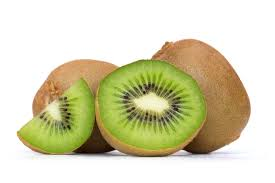 |
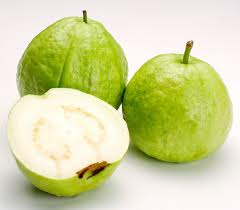 |
|---|
Kiwi fruits that we get locally mostly hail from New Zealand. This furry little fruit is known to contain more potassium than bananas and is higher in vitamin C than most citrus fruits. A 100g serving boasts 46kcal, 180mg potassium, 86.7mg vitamin C, 0.4mg iron and 1.0g fibre. The high content of fibre is reported to benefit individuals suffering from constipation (Chan et al. 2007). But, this powerhouse fruit can really pack a wallop on your wallet, retailing at a lowest price of RM6.99 for a packet of 5 or even pricier for those of golden colour. On the other hand, the larger guava, which only costs about RM3.50 per kg is also equally good. In fact, a 100g serving in comparison to kiwi fruit though contains similar amount of energy and less potassium (29mg), but offers higher amount of vitamin C (152.0mg), iron (1.2mg) and fibre (6.8g). A study recently showed that consumption of guava with a rice-based diet can increase absorption of iron (Nair et al. 2013).
Wheatgrass vs. Spinach
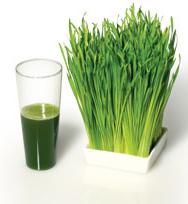 |
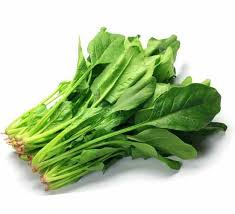 |
|---|
Wheatgrass is world-renowned health food often taken in the form of wheatgrass juice. The high content of chlorophyll and oligosaccharides in wheatgrass has been linked to anti-proliferation effects in cancer (Alitheen et al. 2011) and improved immune response (Tsai et al. 2913). But, at a cost of RM3.99 for a small shot (30ml), it’s indeed pricey. A 30ml serving of juice can offer 20kcal of energy, 1g fibre, 42mg potassium, 10mg vitamin C and 7.2mg calcium. To enjoy the benefits of chlorophyll, you may look for any green vegetables. Spinach, for example, makes a great substitute, not to mention it being more palatable than wheatgrass. Priced only at RM1.20 per 100g, spinach (a 30g serving) offers 7kcal of energy, and more superior amounts of potassium (128mg), vitamin C (26mg) and calcium (30mg). Besides that, it is also a well-known source of iron (1.3mg), especially for vegetarians.
Pomegranate vs. Dragon fruit
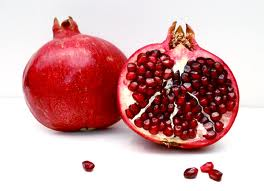 |
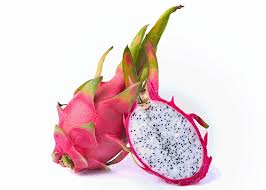 |
|---|
Pomegranate has been praised as a cardio-protective superfood. Studies have reported that consumption of pomegranate juice can reduce the risk of cardiovascular disease (Esmaillzadeh et al. 2004), as well as decrease oxidative stress and inflammation (Shema-Didi et al. 2012). A 100g serving of this ruby red fruit serves up 83kcal energy, 236mg potassium, 10.2mg vitamin C, 10mg calcium and 4g of fibre. Costing RM6.00 per fruit, it may add a slight pinch to your budget. On the contrary, the dragon fruit, can be purchased at a lower price of RM2.50 each. Though it may lose out a little in its calcium (8.8mg) and fibre (0.9g) content, nevertheless it is way ahead in potassium (436mg) and vitamin C (14.5mg). The red variation of dragon fruit is often deemed more nutritious because of its hues, but a 2011 study showed that the antioxidant functions of both red and white dragon fruit were actually comparable (Kim et al. 2011).
Salmon vs. Indian mackerel
 |
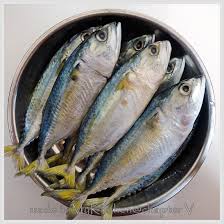 |
|---|
Salmon is a long-time favourite superfood, known explicitly for its abundant omega-3 essential fatty acid. This good fat has been associated with reduction in cardiovascular disease risk (Harris et al. 2013) and prevention of age-related cognitive decline (Denis et al. 2013). To get hold of salmon, one would need to pay between RM4.99 to RM 9.90 per 100g (RM49.90 to RM 83.00 per kg) for the fish, which is a hefty budget for many households. Indian mackerel, or most fondly known as ikan kembung, is actually a great local source of omega-3, with a 100g serving boasting 1,450mg omega-3 and 370mg potassium. Though generally inferior compared to salmon, but surely more affordable at a price of RM11.90 per kg. In addition, the local fish also offers more calcium (48mg compared to 12mg in salmon) and has less fat (3.9g versus 6.3g). For the omega-3 goodness, you can also try canned sardines (RM3.00 to RM4.99 per can). There you go, some of my suggested substitutes for you to enjoy the goodness contained in these much publicised ‘superfoods’ at a lower cost. I strongly believe that rather than forking out money on exotic ‘superfoods’, having a balanced diet that comes from natural sources is of utmost importance in your pursuit to health and well-being. Lastly, several tips that can help you spend wisely on good, nutritious foods:
- Select locally grown foods, as they are fresher and more nutritious since they spend less time traveling to reach local markets or supermarkets, compared to their imported counterparts.
- For cheaper deals on local produce, especially fruits and vegetables, check out your nearest night market (pasar malam) or farmer’s market (pasar tani)
- To look for antioxidant-packed foods, look at their colours, as the various hues often indicate the abundance of phytonutrients, noticeably in fruits and vegetables.
- Grow your own ‘superfoods’ and harvest at a cheaper cost – wheatgrass, spinach.
**The alternatives proposed are not meant to be exact replacements, as all foods are not created equal. Prices are just indicative and may vary from location to location. Prepared by Tan Sue Yee, Lecturer, Division of Nutrition and Dietetics
Read more about the Nutrition and Dietetics Programme in IMU









